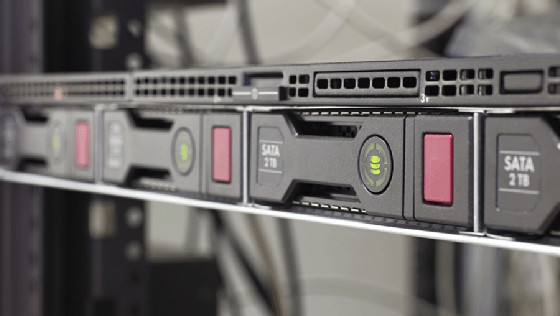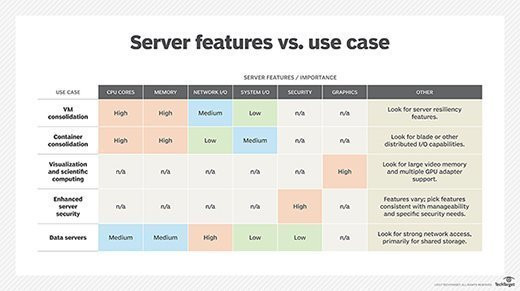In the realm of computing, the term “server” is fundamental, yet it can be interpreted in various ways. At its core, a server is a computer program or a dedicated device that provides a service to other computer programs, known as clients, and their users. Think of it as a digital waiter in a restaurant – it takes requests and delivers the necessary resources. In a data center context, the physical machine housing the server program is also commonly called a server. This machine could be exclusively a dedicated server or serve multiple purposes.
Within the client-server model, a server program expertly handles requests originating from client programs. These client programs can reside on the same machine or across a network on different computers. Interestingly, a single application within a computer system can act both as a client, requesting services, and as a server, fulfilling requests from other programs. This dynamic interplay is crucial to how networks and applications function.
Delving into Server Functionality
The term “server” can denote a physical machine, a virtual machine (VM), or specialized software delivering server functionalities. Servers operate in diverse ways, contingent on the specific context of “server” usage. Server operating systems (OSes), exemplified by Microsoft Windows Server 2022, are designed to efficiently manage client service requests within a network and establish connections with the requested resources. Servers configured for specific roles manage access to specialized resources, such as printer drivers, or applications like file storage.
Physical vs. Virtual Servers: A Detailed Look
A physical server, in simple terms, is a computer engineered to run server software. The distinctions between a server and a typical desktop computer will be explored further in the subsequent section.
 Photo of a rack server.
Photo of a rack server.
Conversely, a virtual server offers a software-based representation of a physical server. Similar to its physical counterpart, a virtual server incorporates its own operating system and applications. These are intentionally isolated from other virtual servers operating on the same physical server, ensuring resource partitioning and security.
The creation of VMs involves installing a lightweight software layer called a hypervisor onto a physical server. The hypervisor empowers the physical server to function as a virtualization host. This virtualization host then makes the physical server’s hardware resources – including CPU processing power, memory, storage capacity, and network bandwidth – available to multiple virtual machines.
An administrative console grants administrators the ability to allocate hardware resources to each virtual server. This leads to significant hardware cost reductions, as a single physical server can host numerous virtual servers, eliminating the need for dedicated physical servers for each workload.
Server Software Essentials
At a minimum, a functional server requires two essential software components: an operating system and a server application. The OS serves as the foundation, or platform, for running the server application. It provides the necessary access to computer networks and the fundamental hardware resources, such as storage drives. Furthermore, it delivers the dependency services that the application relies on to operate smoothly.
The operating system is instrumental in enabling the server application to process client requests effectively. For instance, the server’s Internet Protocol (IP) address and fully qualified domain name are configured and managed at the OS level.
Cloud Servers vs. In-House Servers: Deployment Choices
Mirroring the advantages of most cloud services, cloud servers provide a flexible and easily scalable computing environment. They negate the requirement for physical floor space and equipment racks to house hardware servers, often presenting a cost-effective solution for small to medium-sized businesses. However, it’s important to note that organizations relinquish a degree of direct control when opting for cloud servers.
In contrast, organizations that choose in-house servers retain complete control over their servers and associated resources. However, this control comes with the responsibility of providing physical space for server housing, managing heating, ventilation, and air conditioning (HVAC) systems, and implementing robust physical security measures to prevent unauthorized device access. This model is frequently favored for enterprise-grade applications, where numerous servers are deployed within dedicated data centers.
A hybrid approach, combining both on-site and cloud server resources, represents a balanced alternative, offering flexibility and control tailored to specific organizational needs.
Desktop Computers vs. Servers: Key Distinctions
While desktop computers and servers share operational similarities, critical differences exist. Most servers utilize x86/x64 CPUs and can execute the same code as a standard x86/x64 desktop computer. However, unlike typical desktops and laptops, physical servers often incorporate multiple CPU sockets and error-correcting memory. Servers are also designed to support significantly larger amounts of memory compared to most desktop computers.
Given that server hardware frequently manages mission-critical workloads, server manufacturers and service providers prioritize redundancy in server design. A server may be equipped with redundant power supplies and network interfaces. These redundant components ensure continued server operation even in the event of a failure in a key component, maximizing uptime and reliability.
Server hardware also diverges from desktop hardware in its physical form factor. Modern desktops often come as mini-towers intended for under-desk placement or as portable laptops. In contrast, most servers are designed for rack mounting. Rack mount systems adhere to standardized 1U, 2U, or 4U form factors, dictating the rack space they occupy, with a 2U server consuming twice the space of a 1U server.
Another fundamental difference lies in the operating system. Desktop OSes, such as Windows 10 and Windows 11, while capable of some server-like functionalities, are not designed or licensed to substitute a dedicated server OS.
Some editions of Windows 10 and 11 include Hyper-V, Microsoft’s virtualization platform. While both desktop and server versions of Windows can run Hyper-V, the desktop version is primarily intended for VM development, whereas Windows Server 2022 Hyper-V is built for running production virtual servers.
Running a virtual server on Windows 10 or 11 Hyper-V is technically possible, but licensing considerations are crucial. Moreover, Windows Server 2022 Hyper-V incorporates resilience features absent in the desktop versions. For example, it supports VM replication, storage pools from multiple disk systems, and integration with Microsoft Azure for cloud-based recovery and resilience.
Similarly, Windows 10 and 11 Hyper-V can share files on a local network. However, Windows Server 2022 can be configured as a comprehensive file server with a Resilient File System (ReFS) to protect against data corruption. In large organizations, a Windows Server 2022 distributed file system and block-level replication across a server farm can enhance performance, scalability, and resilience significantly.
Exploring Different Types of Servers
Servers are frequently categorized based on their specific purpose. Here are some common server types:
- Web Server: A web server is a software program that delivers requested Hypertext Markup Language (HTML) webpages or files. In this scenario, a web browser functions as the client, requesting and displaying web content.
- Application Server: This server type provides the core business logic for application programs within a distributed network environment.
- Domain Name System (DNS) Server: A crucial component for internet navigation, a DNS server translates human-readable domain names into numerical IP addresses, enabling internet browsing.
- Proxy Server: Proxy server software acts as an intermediary between a client device and another server, enhancing security, privacy, and potentially improving network performance.
- Game Server: These servers are designed to support the deployment and operation of multiplayer computer games and similar interactive applications.
- Mail Server: Mail servers manage the reception of incoming emails from both local and remote users and handle the forwarding of outgoing emails for delivery across networks.
- Virtual Server: A virtual server is a software-defined server instance running on a shared physical server, providing users with the illusion of dedicated server control and resources.
- Blade Server: A blade server is a compact server chassis housing multiple thin, modular circuit boards known as server blades. Each blade operates as an independent server, often dedicated to a specific application.
- File Server: A file server is responsible for the centralized storage and management of data files, enabling other computers on the same network to access and share files efficiently.
- Policy Server: A policy server is a security component within policy-based networks, providing authorization services and facilitating file tracking and access control.
- Database Server: This server type is dedicated to hosting one or more databases. Client applications can then perform database queries to retrieve or modify data stored on the server.
- Print Server: A print server provides network users with shared access to one or more network-connected printers, managing print jobs and queues for efficient printer utilization.
 Table showing server features needed for various use cases.
Table showing server features needed for various use cases.
Essential Server Components
Servers are complex systems composed of various hardware and software components working in concert.
Hardware Components
At the hardware level, servers typically consist of a rack-mountable chassis enclosing a power supply, a system board (motherboard), one or more CPUs, memory modules, storage drives, a front-panel control interface, rear-panel connectors, and network interface cards.
Most server hardware incorporates out-of-band management capabilities through a dedicated network port. Out-of-band management allows for low-level server management and monitoring independent of the operating system. This system enables remote server power control, OS installation, and comprehensive health monitoring.
Operating System Software
A server OS, such as Windows Server 2022 or Linux distributions like Linux Mint 22, serves as the foundational platform for running applications. The OS provides applications with access to necessary hardware resources and manages network connectivity.
Applications are the driving force behind server functionality. For example, a database server runs a database application, and an email server operates a mail application to deliver their respective services.
Selecting the Right Server: Key Considerations
Choosing the appropriate server involves evaluating numerous factors, including virtualization and containerization needs. When making a server selection, prioritize features based on specific use case requirements. Small businesses, in particular, may have distinct server requirements to consider.
Security is paramount. Evaluate protection, detection, and recovery features, including native data encryption for data in transit and at rest, and persistent event logging for comprehensive activity tracking.
If the server relies on internal storage, disk type and capacity choices are critical, significantly impacting input/output performance and data resilience.
Many organizations are consolidating their data centers by reducing physical server counts through virtualization, enabling fewer physical servers to handle more workloads. Cloud computing has also reshaped on-premises server needs for many organizations.
Increasing computing density by consolidating workloads onto fewer servers reduces capital expenditures, data center footprint, and power and cooling demands. However, this consolidation also elevates risk, as more workloads become vulnerable to server failures or maintenance downtime. Server OSes like Windows Server 2022 include features to enhance data protection, disaster recovery, and overall system resilience.
To streamline the server selection process, consider these guiding tips:
- Secure buy-in and funding from senior management for server modifications and requirements.
- Define precise workload requirements, encompassing application types and data processing volumes.
- Establish a detailed budget covering hardware, software, power, HVAC, spares, environment, maintenance, support, and security.
- Determine production environment needs, including user and workload counts, networking, and operating environments.
- Select an OS, considering current and future workloads, system administration needs, and staff training.
- For physical servers, define the form factor and location, considering space, efficiency, and security.
- Develop a virtual server model to compare options or assess physical server suitability.
Once deployed, servers require consistent maintenance to ensure peak performance. Download a server maintenance checklist for best practices.

